- Home
- Richard Dawkins
The Selfish Gene Page 6
The Selfish Gene Read online
Page 6
In sexually reproducing species, the individual is too large and too temporary a genetic unit to qualify as a significant unit of natural selection. The group of individuals is an even larger unit. Genetically speaking, individuals and groups are like clouds in the sky or dust-storms in the desert. They are temporary aggregations or federations. They are not stable through evolutionary time. Populations may last a long while, but they are constantly blending with other populations and so losing their identity. They are also subject to evolutionary change from within. A population is not a discrete enough entity to be a unit of natural selection, not stable and unitary enough to be 'selected' in preference to another population.
An individual body seems discrete enough while it lasts, but alas, how long is that? Each individual is unique. You cannot get evolution by selecting between entities when there is only one copy of each entity! Sexual reproduction is not replication. Just as a population is contaminated by other populations, so an individual's posterity is contaminated by that of his sexual partner. Your children are only half you, your grandchildren only a quarter you. In a few generations the most you can hope for is a large number of descendants, each of whom bears only a tiny portion of you-a few genes-even if a few do bear your surname as well.
Individuals are not stable things, they are fleeting. Chromosomes too are shuffled into oblivion, like hands of cards soon after they are dealt. But the cards themselves survive the shuffling. The cards are the genes. The genes are not destroyed by crossing-over, they merely change partners and march on. Of course they march on. That is their business. They are the replicators and we are their survival machines. When we have served our purpose we are cast aside. But genes are denizens of geological time: genes are forever.
Genes, like diamonds, are forever, but not quite in the same way as diamonds. It is an individual diamond crystal that lasts, as an unaltered pattern of atoms. DNA molecules don't have that kind of permanence. The life of any one physical DNA molecule is quite short-perhaps a matter of months, certainly not more than one lifetime. But a DNA molecule could theoretically live on in the form of copies of itself for a hundred million years. Moreover, just like the ancient replicators in the primeval soup, copies of a particular gene may be distributed all over the world. The difference is that the modern versions are all neatly packaged inside the bodies of survival machines.
What I am doing is emphasizing the potential near-immortality of a gene, in the form of copies, as its defining property. To define a gene as a single cistron is good for some purposes, but for the purposes of evolutionary theory it needs to be enlarged. The extent of the enlargement is determined by the purpose of the definition. We want to find the practical unit of natural selection. To do this we begin by identifying the properties that a successful unit of natural selection must have. In the terms of the last chapter, these are longevity, fecundity, and copying-fidelity. We then simply define a 'gene' as the largest entity which, at least potentially, has these properties. The gene is a long-lived replicator, existing in the form of many duplicate copies. It is not infinitely long-lived. Even a diamond is not literally everlasting, and even a cistron can be cut in two by crossing-over. The gene is defined as a piece of chromosome which is sufficiently short for it to last, potentially, for long enough for it to function as a significant unit of natural selection.
Exactly how long is 'long enough'? There is no hard and fast answer. It will depend on how severe the natural selection 'pressure' is. That is, on how much more likely a 'bad' genetic unit is to die than its 'good' allele. This is a matter of quantitative detail which will vary from example to example. The largest practical unit of natural selection-the gene-will usually be found to lie somewhere on the scale between cistron and chromosome.
It is its potential immortality that makes a gene a good candidate as the basic unit of natural selection. But now the time has come to stress the word 'potential'. A gene can live for a million years, but many new genes do not even make it past their first generation. The few new ones that succeed do so partly because they are lucky, but mainly because they have what it takes, and that means they are good at making survival machines. They have an effect on the embryonic development of each successive body in which they find themselves, such that that body is a little bit more likely to live and reproduce than it would have been under the influence of the rival gene or allele. For example, a 'good' gene might ensure its survival by tending to endow the successive bodies in which it finds itself with long legs, which help those bodies to escape from predators. This is a particular example, not a universal one. Long legs, after all, are not always an asset. To a mole they would be a handicap. Rather than bog ourselves down in details, can we think of any universal qualities that we would expect to find in all good (i.e. long-lived) genes? Conversely, what are the properties that instantly mark a gene out as a 'bad', short-lived one? There might be several such universal properties, but there is one that is particularly relevant to this book: at the gene level, altruism must be bad and selfishness good. This follows inexorably from our definitions of altruism and selfishness. Genes are competing directly with their alleles for survival, since their alleles in the gene pool are rivals for their slot on the chromosomes of future generations. Any gene that behaves in such a way as to increase its own survival chances in the gene pool at the expense of its alleles will, by definition, tautologously, tend to survive. The gene is the basic unit of selfishness.
The main message of this chapter has now been stated. But I have glossed over some complications and hidden assumptions. The first complication has already been briefly mentioned. However independent and free genes may be in their journey through the generations, they are very much not free and independent agents in their control of embryonic development. They collaborate and interact in inextricably complex ways, both with each other, and with their external environment. Expressions like 'gene for long legs' or 'gene for altruistic behaviour' are convenient figures of speech, but it is important to understand what they mean. There is no gene which single-handedly builds a leg, long or short. Building a leg is a multi-gene cooperative enterprise. Influences from the external environment too are indispensable: after all, legs are actually made of food! But there may well be a single gene which, other things being equal, tends to make legs longer than they would have been under the influence of the gene's allele.
As an analogy, think of the influence of a fertilizer, say nitrate, on the growth of wheat. Everybody knows that wheat plants grow bigger in the presence of nitrate than in its absence. But nobody would be so foolish as to claim that, on its own, nitrate can make a wheat plant. Seed, soil, sun, water, and various minerals are obviously all necessary as well. But if all these other factors are held constant, and even if they are allowed to vary within limits, addition of nitrate will make the wheat plants grow bigger. So it is with single genes in the development of an embryo. Embryonic development is controlled by an interlocking web of relationships so complex that we had best not contemplate it. No one factor, genetic or environmental, can be considered as the single 'cause' of any part of a baby. All parts of a baby have a near infinite number of antecedent causes. But a difference between one baby and another, for example a difference in length of leg, might easily be traced to one or a few simple antecedent differences, either in environment or in genes. It is differences that matter in the competitive struggle to survive; and it is genetically-controlled differences that matter in evolution.
As far as a gene is concerned, its alleles are its deadly rivals, but other genes are just a part of its environment, comparable to temperature, food, predators, or companions. The effect of the gene depends on its environment, and this includes other genes. Sometimes a gene has one effect in the presence of a particular other gene, and a completely different effect in the presence of another set of companion genes. The whole set of genes in a body constitutes a kind of genetic climate or background, modifying and influencing the effects of any particular
gene.
But now we seem to have a paradox. If building a baby is such an intricate cooperative venture, and if every gene needs several thousands of fellow genes to complete its task, how can we reconcile this with my picture of indivisible genes, springing like immortal chamois from body to body down the ages: the free, untrammelled, and self-seeking agents of life? Was that all nonsense? Not at all. I may have got a bit carried away with the purple passages, but I was not talking nonsense, and there is no real paradox. We can explain this by means of another analogy.
One oarsman on his own cannot win the Oxford and Cambridge boat race. He needs eight colleagues. Each one is a specialist who always sits in a particular part of the boat-bow or stroke or cox etc. Rowing the boat is a cooperative venture, but some men are nevertheless better at it than others. Suppose a coach has to choose his ideal crew from a pool of candidates, some specializing in the bow position, others specializing as cox, and so on. Suppose that he makes his selection as follows. Every day he puts together three new trial crews, by random shuffling of the candidates for each position, and he makes the three crews race against each other. After some weeks of this it will start to emerge that the winning boat often tends to contain the same individual men. These are marked up as good oarsmen. Other individuals seem consistently to be found in slower crews, and these are eventually rejected. But even an outstandingly good oarsman might sometimes be a member of a slow crew, either because of the inferiority of the other members, or because of bad luck-say a strong adverse wind. It is only on average that the best men tend to be in the winning boat.
The oarsmen are genes. The rivals for each seat in the boat are alleles potentially capable of occupying the same slot along the length of a chromosome. Rowing fast corresponds to building a body which is successful at surviving. The wind is the external environment. The pool of alternative candidates is the gene pool. As far as the survival of any one body is concerned, all its genes are in the same boat. Many a good gene gets into bad company, and finds itself sharing a body with a lethal gene, which kills the body off in childhood. Then the good gene is destroyed along with the rest. But this is only one body, and replicas of the same good gene live on in other bodies which lack the lethal gene. Many copies of good genes are dragged under because they happen to share a body with bad genes, and many perish through other forms of ill luck, say when their body is struck by lightning. But by definition luck, good and bad, strikes at random, and a gene that is consistently on the losing side is not unlucky; it is a bad gene.
One of the qualities of a good oarsman is teamwork, the ability to fit in and cooperate with the rest of a crew. This may be just as important as strong muscles. As we saw in the case of the butterflies, natural selection may unconsciously 'edit' a gene complex by means of inversions and other gross movements of bits of chromosome, thereby bringing genes that cooperate well together into closely linked groups. But there is also a sense in which genes which are in no way linked to each other physically can be selected for their mutual compatibility. A gene that cooperates well with most of the other genes that it is likely to meet in successive bodies, i.e. the genes in the whole of the rest of the gene pool, will tend to have an advantage.
For example, a number of attributes are desirable in an efficient carnivore's body, among them sharp cutting teeth, the right kind of intestine for digesting meat, and many other things. An efficient herbivore, on the other hand, needs flat grinding teeth, and a much longer intestine with a different kind of digestive chemistry. In a herbivore gene pool, any new gene that conferred on its possessors sharp meat-eating teeth would not be very successful. This is not because meat-eating is universally a bad idea, but because you cannot efficiently eat meat unless you also have the right sort of intestine, and all the other attributes of a meat-eating way of life. Genes for sharp, meat-eating teeth are not inherently bad genes. They are only bad genes in a gene-pool that is dominated by genes for herbivorous qualities.
This is a subtle, complicated idea. It is complicated because the 'environment' of a gene consists largely of other genes, each of which is itself being selected for its ability to cooperate with its environment of other genes. An analogy adequate to cope with this subtle point does exist, but it is not from everyday experience. It is the analogy with human 'game theory', which will be introduced in Chapter 5 in connection with aggressive contests between individual animals. I therefore postpone further discussion of this point until the end of that chapter, and return to the central message of this one. This is that the basic unit of natural selection is best regarded not as the species, nor as the population, nor even as the individual, but as some small unit of genetic material which it is convenient to label the gene.
The cornerstone of the argument, as given earlier, was the assumption that genes are potentially immortal, while bodies and all other higher units are temporary. This assumption rests upon two facts: the fact of sexual reproduction and crossing-over, and the fact of individual mortality. These facts are undeniably true. But this does not stop us asking why they are true. Why do we and most other survival machines practise sexual reproduction? Why do our chromosomes cross over? And why do we not live for ever?
The question of why we die of old age is a complex one, and the details are beyond the scope of this book. In addition to particular reasons, some more general ones have been proposed. For example, one theory is that senility represents an accumulation of deleterious copying errors and other kinds of gene damage which occur during the individual's lifetime. Another theory, due to Sir Peter Medawar, is a good example of evolutionary thinking in terms of gene selection. Medawar first dismisses traditional arguments such as: 'Old individuals die as an act of altruism to the rest of the species, because if they stayed around when they were too decrepit to reproduce, they would clutter up the world to no good purpose.' As Medawar points out, this is a circular argument, assuming what it sets out to prove, namely that old animals are too decrepit to reproduce. It is also a naive group-selection or species-selection kind of explanation, although that part of it could be rephrased more respectably. Medawar's own theory has a beautiful logic. We can build up to it as follows.
We have already asked what are the most general attributes of a 'good' gene, and we decided that 'selfishness' was one of them. But another general quality that successful genes will have is a tendency to postpone the death of their survival machines at least until after reproduction. No doubt some of your cousins and great-uncles died in childhood, but not a single one of your ancestors did. Ancestors just don't die young!
A gene that makes it possessors die is called a lethal gene. A semi-lethal gene has some debilitating effect, such that it makes death from other causes more probable. Any gene exerts its maximum effect on bodies at some particular stage of life, and lethals and semilethals are not exceptions. Most genes exert their influence during foetal life, others during childhood, other during young adulthood, others in middle age, and yet others in old age. (Reflect that a caterpillar and the butterfly it turns into have exactly the same set of genes.) Obviously lethal genes will tend to be removed from the gene pool. But equally obviously a late-acting lethal will be more stable in the gene pool than an early-acting lethal. A gene that is lethal in an older body may still be successful in the gene pool, provided its lethal effect does not show itself until after the body has had time to do at least some reproducing. For instance, a gene that made old bodies develop cancer could be passed on to numerous offspring because the individuals would reproduce before they got cancer. On the other hand, a gene that made young adult bodies develop cancer would not be passed on to very many offspring, and a gene that made young children develop fatal cancer would not be passed on to any offspring at all. According to this theory then, senile decay is simply a by-product of the accumulation in the gene pool of late-acting lethal and semi-lethal genes, which have been allowed to slip through the net of natural selection simply because they are late-acting.
The aspec
t that Medawar himself emphasizes is that selection will favour genes that have the effect of postponing the operation of other, lethal genes, and it will also favour genes that have the effect of hastening the effect of good genes. It may be that a great deal of evolution consists of genetically-controlled changes in the time of onset of gene activity.
It is important to notice that this theory does not need to make any prior assumptions about reproduction occurring only at certain ages. Taking as a starting assumption that all individuals were equally likely to have a child at any age, the Medawar theory would quickly predict the accumulation in the gene pool of late-acting deleterious genes, and the tendency to reproduce less in old age would follow as a secondary consequence.
As an aside, one of the good features of this theory is that it leads us to some rather interesting speculations. For instance it follows from it that if we wanted to increase the human life span, there are two general ways in which we could do it. Firstly, we could ban reproduction before a certain age, say forty. After some centuries of this the minimum age limit would be raised to fifty, and so on. It is conceivable that human longevity could be pushed up to several centuries by this means. I cannot imagine that anyone would seriously want to institute such a policy.
Secondly we could try to 'fool' genes into thinking that the body they are sitting in is younger than it really is. In practice this would mean identifying changes in the internal chemical environment of a body that take place during ageing. Any of these could be the 'cues' that 'turn on' late-acting lethal genes. By simulating the superficial chemical properties of a young body it might be possible to prevent the turning on of late-acting deleterious genes. The interesting point is that chemical signals of old age need not in any normal sense be deleterious in themselves. For instance, suppose that it incidentally happens to be a fact that a substance S is more concentrated in the bodies of old individuals than of young individuals. S in itself might be quite harmless, perhaps some substance in the food which accumulates in the body over time. But automatically, any gene that just happened to exert a deleterious effect in the presence of S, but which otherwise had a good effect, would be positively selected in the gene pool, and would in effect be a gene 'for' dying of old age. The cure would simply be to remove S from the body.

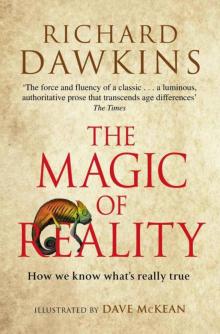 The Magic of Reality
The Magic of Reality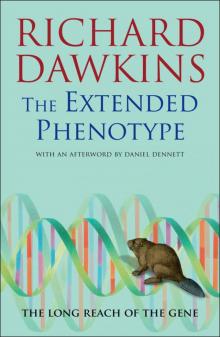 The Extended Phenotype
The Extended Phenotype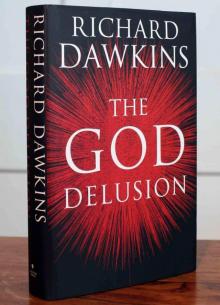 The God Delusion
The God Delusion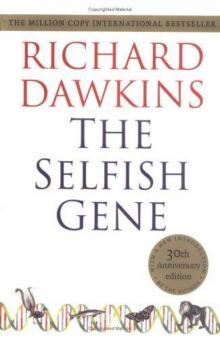 The Selfish Gene
The Selfish Gene The Blind Watchmaker
The Blind Watchmaker The Greatest Show on Earth
The Greatest Show on Earth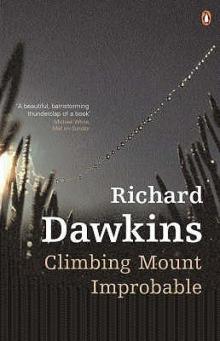 Climbing Mount Improbable
Climbing Mount Improbable Outgrowing God
Outgrowing God Brief Candle in the Dark
Brief Candle in the Dark The Greatest Show on Earth: The Evidence for Evolution
The Greatest Show on Earth: The Evidence for Evolution Science in the Soul
Science in the Soul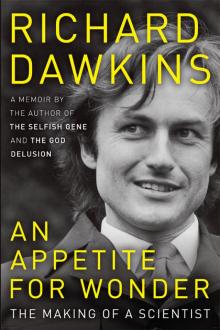 An Appetite for Wonder
An Appetite for Wonder